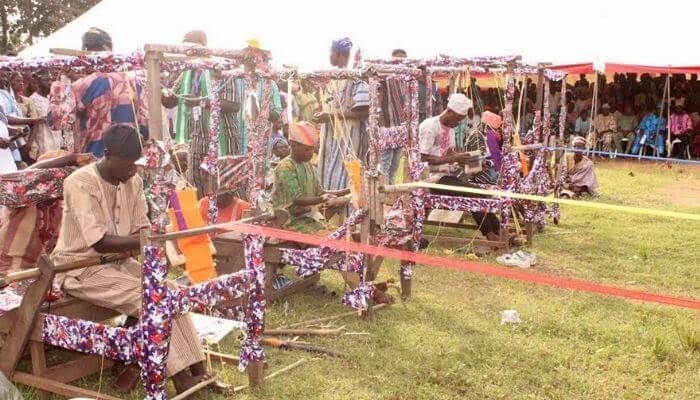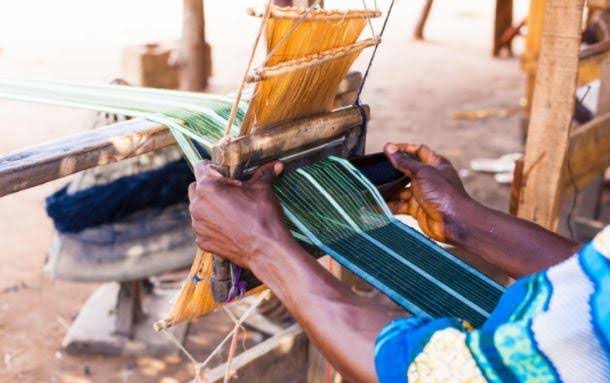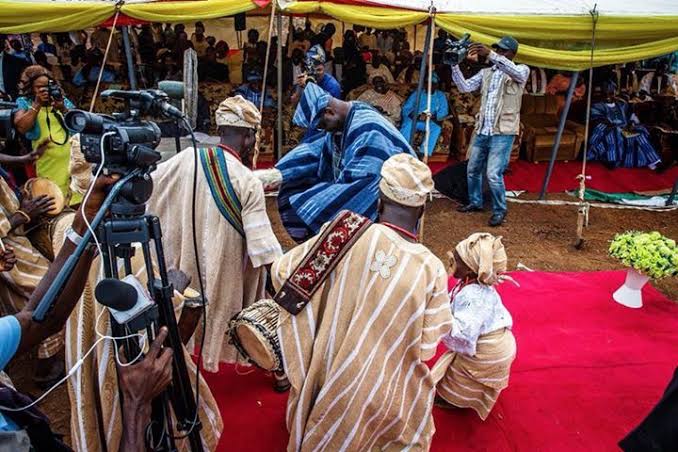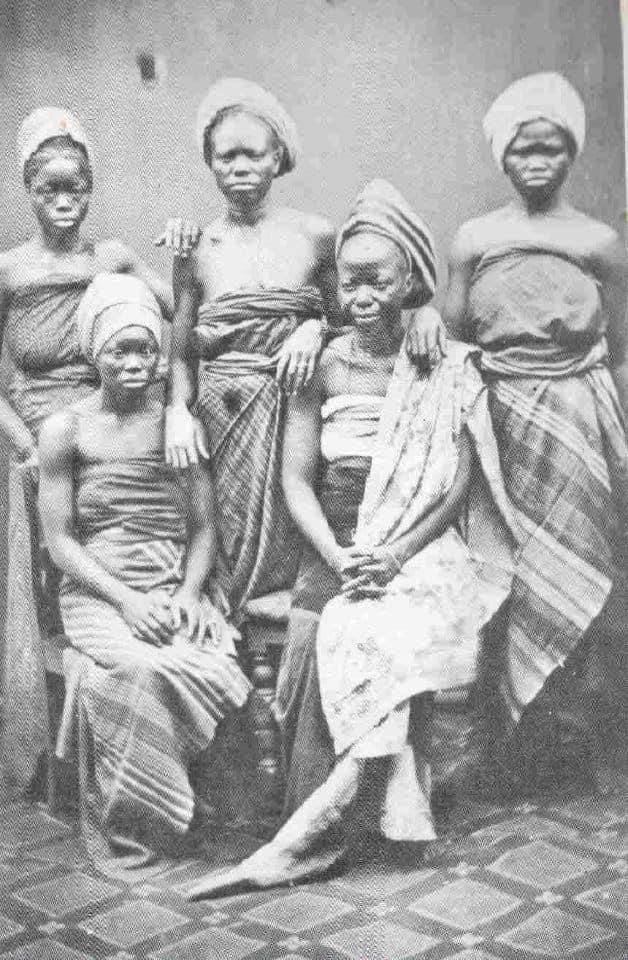Iseyin, a town in the country side of Oyo state, is an ancient city in Yoruba land which is rich in history, culture and tradition.
This richness is evident in the socio-cultural relations displayed by the Iseyin natives. In the panegyrics used to describe it.

Iseyin is approximately 100 km north of Ibadan and it is the fourth largest city in Oyo state after Ibadan, Ogbomoso and Oyo. It is a part of the Oke-Ogun towns often referred to as the food basket of Nigeria.
The town as at 2011, was estimated to have a population of 302,990. The emergence of Iseyin was not arbitrary; however, its geographical endowment was a centre of attraction to the earliest farmers and hunters, who saw it as a fertile forestland for both mild and wild games
Thereby serving as a pedestal for agriculturists and game hunters to thrive upon. The slight modification in its landscape whereby Iseyin land tucks into itself within an expanse of land surrounded by four high hills, has a link with history.
According to history, Aaba Odo Iseyin and his people were the first set of settlers to exploit the earlier bewildered forest now called Iseyin. Aaba Odo-Iseyin, who belonged to the Oro creed, was an ordinary hunter with no royal or chieftaincy background.
He migrated from Ile Ife for hunting purposes to Build for himself and his people, a Camp Base at Ipokun, where they rest and reside after the day’s work. The base was later relocated to Igbo-Odofin.
Aaba Odo-Iseyin was thereafter joined by another valiant hunter, Ipale; who led his people to another part of the forest to Continue with their work. Like Aaba, Ipale was also of the Oro creed and has no link with any royal hegemony.
It is however important to note that no name had been given to the forest as at the time the hunters were settling in. Subsequently, Oke-Esa and Jagun Ilado migrated to the forest land to settle in as hunters. Together with their people, they settle at different portions of the land.
Jagun had his base at Igbo-Iwoye (in present Ilado Area). They were not different from the previous hunters in mission, origin and creed. Aaba Odo-Iseyin took it upon himself to convince the other hunters to visit Ebedi in submission. And he invited them to a meeting at their meeting place.
They all came, and he disseminated the message. Despite all his explanations, only Ipale, and Jagun were convinced to visit Ebedi and they did so. Oke-Esa on the other hand, considered such invitation disdainful and refused to tow the path of his colleagues.
When Ebedi, who was of Sango creed got a wind of this, he put an eternal ban on Oke-Esa and his descendants from being a chief or community Head, in the history of Iseyin. Ever since, no Aseyin has dared to appoint anyone as Baale in Oke-esa community till today.
All the other three hunters were appointed the heads of their respective communities. Their titles are Aaba Odo-Iseyin (Dunmoba Community), Ipale (Ekunle Community) and Jagun (Ilado Community). Ipale was also given the right to apportion land to strangers who wished to settle in Iseyin land.
Among the beneficiaries were Baale Koso and his people, Onikosa and his people, Baale Ladogan and his people, and many others. History has it that Aaba Odo-Iseyin later made arrangement to settle Ebedi at Ekunle, which he agreed to. Due to the humility of the three hunters who were of Oro extraction.
Ebedi approved Oro oracle as the official oracle with which Iseyin was created and decided to honour it By celebrating it annually. This was the beginning of the yearly Oro festival in Iseyin, as depicted in one of its panegyrics: Iseyin Oro Omo Ebedi.

The Oro festival marks the time during which women in the town are confined in, for some hours daily for a week, and peaked. The seventh and seventeenth day with full day confinement. In addition, Ebedi endorsed making sacrifice to Oro, a part of rites necessary to make any Aseyin.
After Ebedi had settled down at Ekunle, as a valiant and responsible leader he deemed it necessary to provide security Subjects against external aggression and intrusion, which was the order of the day. To achieve this feat, history has it that Ebedi set out to Dahomey (now Benin Republic), to seek powers to ward off. Insurgence and enslavement from this newly established town christened Iseyin.

It was said that the name ‘Iseyin’, emanated from palm kernel processing. This assignment took Ebedi a very long time which made his people concluded that a calamity beyond his control had befallen him and won’t be able to return. Since a community without a leader is on The brink of disorder, they decided to appoint an Oba.
They therefore chose Ebedi’s brother, Ogbolu as the first Aseyin of Iseyinland. The event turned dramatic as Ebedi resurfaced with an army of supporters including sophisticated security experts and both male and female Servants, at the time when Ogbolu’s installation ceremony was at its peak.
Not too far from the outskirts, Ebedi heard drum beats and tunes signifying a grand celebration in the town. He ordered his entourage to stop after he sighted a pregnant woman plucking leaves nearby. He approached the woman to elicit information about what was happening in the town from her.
Having heard about the installation, Ebedi was sad and disappointed about the development. With courage and a great sense of patriotism, he sent all the security outfits he brought From Dahomey to his sibling, the new Oba, through the pregnant woman.
He instructed the woman to instruct Ogbolu that he could no longer enter the town to avert anarchism or possible breakdown. Consequently, Ebedi transmogrify into a high hill (Ebedi Hill) and his entourage Followed suit.
Ogba, one of his charms experts transformed into a river (Odo-Ogba) and channeled across through the length of Iseyinland. His chief servants; Oluofi, Eyinjue and Atamafon also transform into high hills at different location on the outskirts of the town Making Iseyin to be surrounded by four historical hills. Others in the entourage who transformed into rivers are Igbobi, Atori and Ajumoda, Ogidiyi, Adabo, Iserin and Okutapamo also transformed into some other things out of disappointment and inability to go back to Dahomey. Ebedi’s transmogrification explains why it became a tradition for every installed Aseyin.
To make sacrifice to Ebedi Hill on a yearly basis. Some historians have asserted that Ebedi is a very popular hero whose name is the most mentioned in the history of Iseyin and that Ebedi. Many families in this rustic town are cotton spinners and weavers, a tradition passed on from generation to generation.
It is rare to find any Iseyin native that grew up in the town, who does not know how to weave. According to the town’s customs, learning how to weave, Starts from age 8 and 10 years.

Hence the saying, weaving of aso-oke is as old as Iseyin. Today, Iseyin houses SAF Polytechnic, Iseyin (a private polytechnic), a Government Technical College, the Oyo State NYSC Permanent Orientation Camp, Friesland Campina (Wamco), A milk processing centre, Raji Oke-Esa Memorial Library (a digital library) as well as Ikere Gorge Dam.
Which was discovered alongside Kanji Dam. Without a doubt, Iseyin is best known for its dyeing (using locally grown indigo as well as imported dyes) of heavy imported cloths. Tobacco amongst other food and cash crops, is grown in Iseyin.

Due to the sustainable annual rainfall in the area, the major agricultural activities are farming, hunting, fishing, food processing among others. It also produces virtually all fam produce such as yam Maize,cassava, plantain among many others.
Source | Twitter Bolanle Oni Story.
